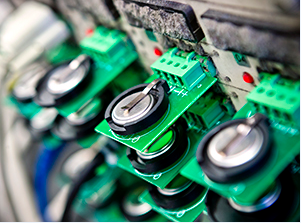Building a Stronger, Safer Zinc Battery
University of Maryland engineers revive an old chemistry with a new electrolyte.
A team led by researchers at the University of Maryland’s A. James Clark School of Engineering has created a water-based zinc battery that is simultaneously powerful, rechargeable, and intrinsically safe.
Together with colleagues at the U.S. Army Research Laboratory and National Institute of Standards and Technology, UMD engineers combined old battery technology (metallic zinc) with new (water-in-salt electrolytes). Building on prior UMD advances to create safer batteries using a novel aqueous electrolyte instead of the flammable organic electrolyte used in conventional lithium-ion batteries, the researchers cranked up the energy of the aqueous battery by adding metallic zinc—used as the anode of the very first battery—and its salt to the electrolyte as well.
The research team says the new aqueous zinc battery could eventually be used not just in consumer electronics, but also in extreme conditions to improve the performance of safety-critical vehicles such as those used in aerospace, military, and deep-ocean environments.
As an example of the aqueous zinc battery’s power and safety, the researchers cite numerous battery fire incidents in cell phones, laptops, and electric cars highlighted in media coverage. This new aqueous zinc battery could be the answer to the call for safe battery chemistry while still maintaining the comparable or even higher energy densities of conventional lithium-ion batteries.
A paper based on the research was published in Nature Materials.
